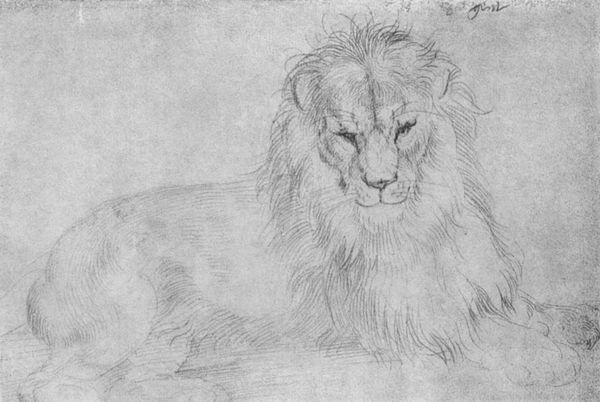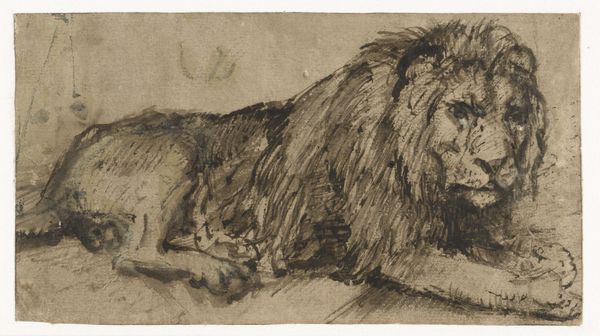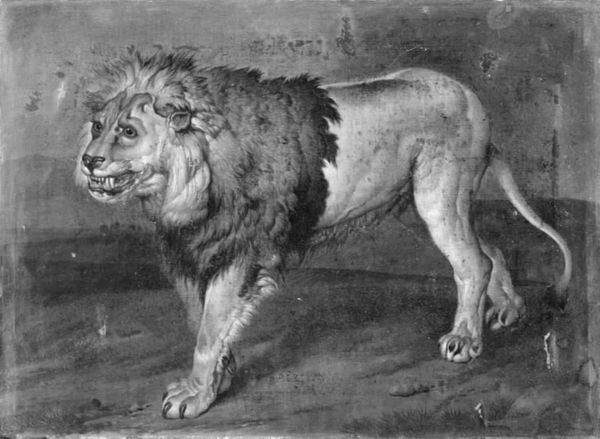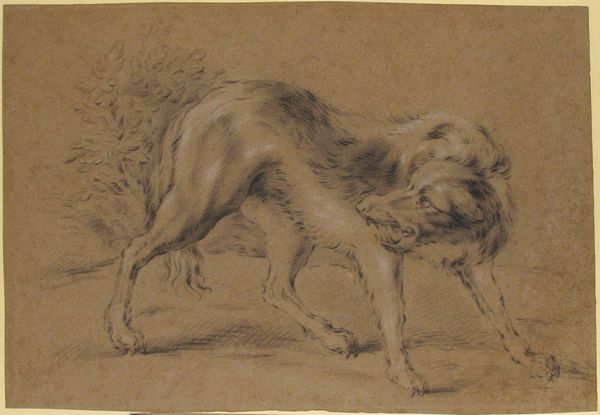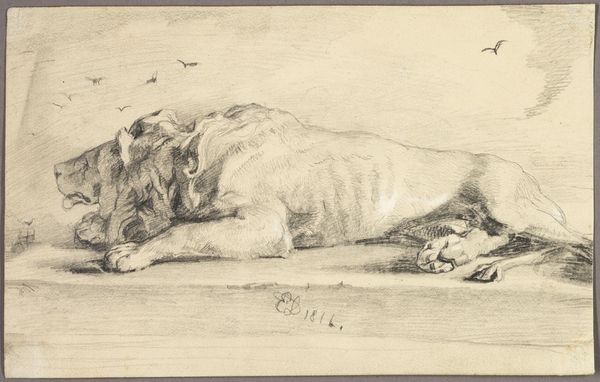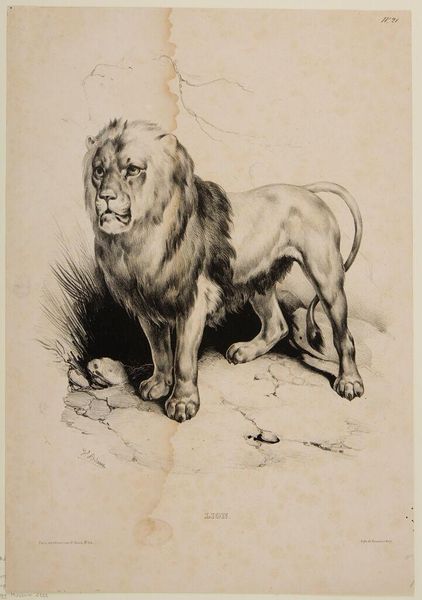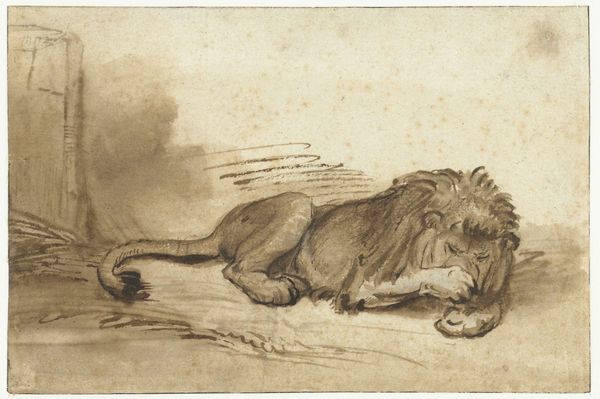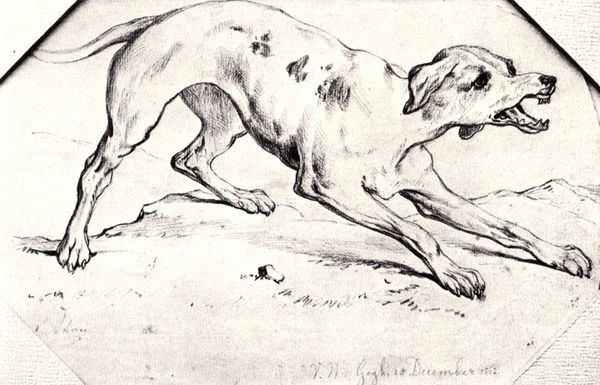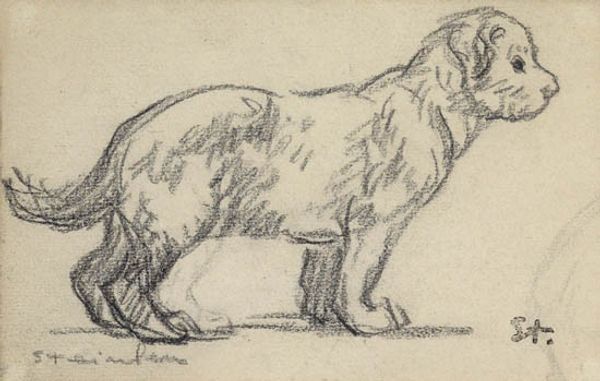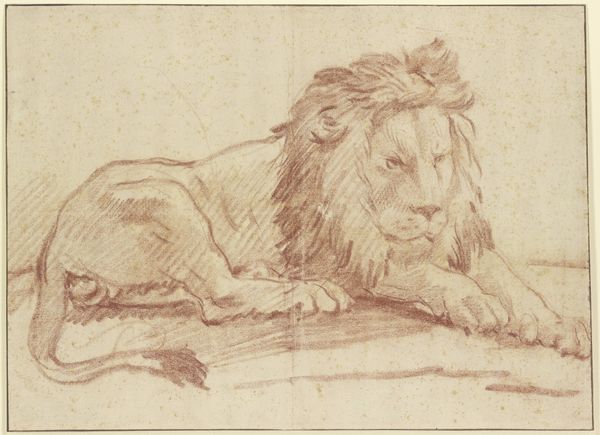
drawing, charcoal
#
drawing
#
baroque
#
animal
#
landscape
#
charcoal drawing
#
form
#
line
#
charcoal
#
charcoal
#
realism
Copyright: Public domain
Rembrandt van Rijn drew this sketch of a resting lion with pen and brush in the Dutch Republic, most likely sometime in the 1650s. Lions were a popular subject in the art of the Netherlands. The animal was a common symbol of power and royalty, often associated with the Dutch Republic itself, which had thrown off the yoke of Spanish Habsburg rule in the Eighty Years' War. But lions were also exotic creatures, generally seen only in traveling menageries, so Rembrandt's choice of subject suggests a public interest in natural history and scientific observation. The sketch itself is quite informal. The artist seems less interested in symbolic meaning than in a direct, close-up study of an animal. It's the kind of spontaneous sketch that might have been done in preparation for a more finished painting. Art historians consult a range of resources to better understand images like this, from artist's letters to contemporary accounts of public life, to the records of institutions like the Dutch East India Company, which brought exotic animals to the Netherlands. The meaning of art is always contingent on its social and institutional context.
Comments
No comments
Be the first to comment and join the conversation on the ultimate creative platform.


